Ready Player One and the history of VR in movies and TV: virtual reality Hollywood
Take the red pill and we’ll show you how deep the rabbit hole goes
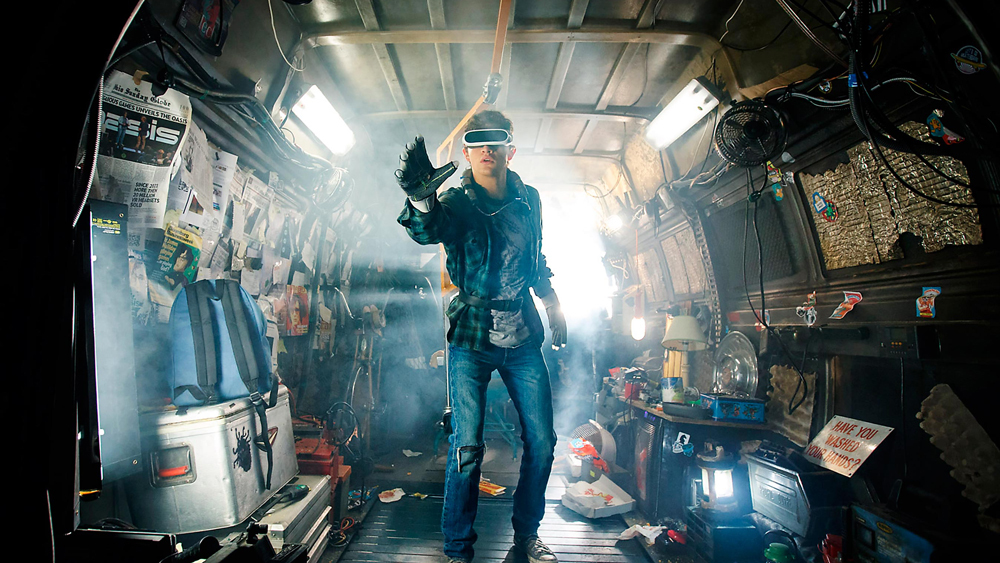
Forget Oculus Rift and HTC Vive – Ready Player One will be hitting cinema screens all over the globe in March 2018, bringing novelist Ernest Cline’s original vision of a rich and extremely life-like virtual reality gaming world, called the OASIS, to the big screen.
But this isn’t the first time a movie about virtual reality has aroused our cultural craving for fantastical future technology and employed some of the same tropes about all the wonders and horrors it could bring.
In fact, exploring the endless possibilities, ethical minefields and advanced technological inventions around virtual reality has played a central role in science-fiction from the early days of Doctor Who through to the nightmarish visions of David Cronenberg to the storylines of Rick and Morty.
So as we wait for Ready Player One to be released, we’ve decided to go on an adventure. From horrifying, hair-raising games and holodeck adventures through to sprawling sci-fi worlds, we bring you a brief history of VR in TV and film.
It’s worth bearing in mind as you make your way through the list that there might be some titles missing that you would have included and their omission is sure to make for some interesting discussions. For example, is The Grid from Tron virtual reality? Or more digitisation and miniaturisation? We thought the latter. And is Inception an adventure into someone else’s subconscious or an example of a simulated reality? We settled on the former.
Needless to say, we've tried our best not to lift the lid on endings and twists, but there'll be some spoilers in here. So without further ado, it’s time to take the red pill – we’ll show you how deep the rabbit hole goes:
1973: Welt am Draht / World on a Wire
The first entry on our list is Welt am Draht, or World on a Wire. Based on the novel Simulacron-3 by Daniel F Galouye, it’s a German TV mini series that’s a colorful, creepy and underrated sci-fi treat. It’ll especially appeal if you’re a fan of the 70s aesthetic and can’t get enough of the deeply disturbing classic from the same era, A Clockwork Orange.
It’s all about the murder of Professor Vollmer, a technological genius who was responsible for creating a virtual world called the Simulacron. What follows is a great deal of conspiracy, more murders and plenty of drama about what it means to bridge the gap between real and virtual worlds.
As you might expect, it’s now considered to have been a film and story that was well ahead of its time and has had numerous re-releases since.
1976: Doctor Who - The Deadly Assassin
This isn’t the only Doctor Who episode where virtual reality (or a simulated reality) plays a role, but it’s the most important in our eyes because it was so bloody long ago.
In this episode, the Doctor (played by Tom Baker at this point) goes on an adventure within a vast virtual world called the Matrix (!) in which thoughts can take on a life of their own.
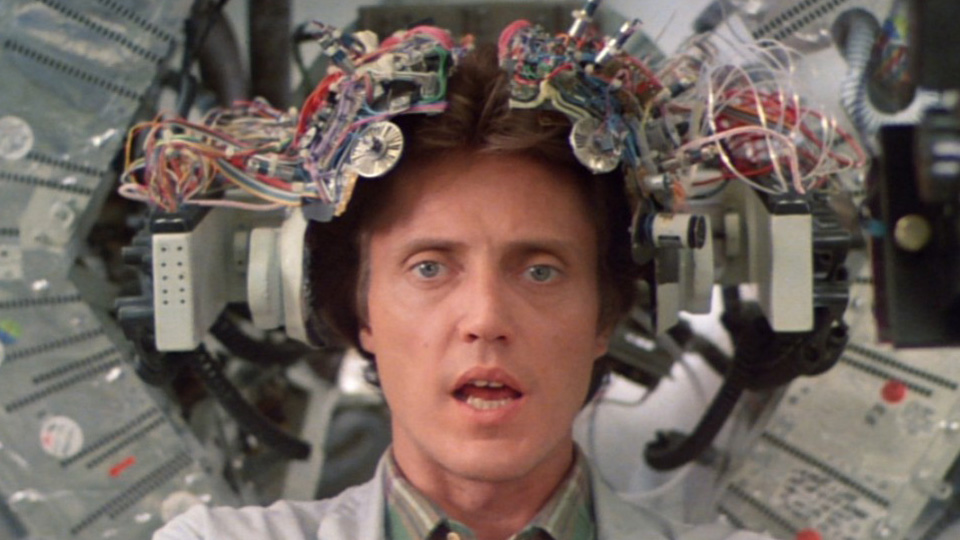
1983: Brainstorm
Brainstorm is about a group of scientists headed up by Michael Brace (played by Christopher Walken) who develop a bizarre-looking head mounted device that allows users to record their feelings, emotions and experiences, which are then stored for others to try on for size.
It’s a sci-fi lover’s dream with lots of messy wires and raw-looking shots of the hardware used to hook up brains to the device, as well as fantastical dreamscapes. What makes this even more compelling on the screen is that director Douglas Trumball shot the scenes within the virtual memories with different film, creating a true sense that you’re experiencing something really different.
There’s also plenty of thoughtful exploration of the darker dimensions of tech development, like the brain-mushing consequences of simulated sex overload, scary roller coasters and militarising the hardware.
Brainstorm is a brilliant movie that didn’t go on to be particularly successful or get the recognition it deserved, which is mostly due to the fact that leading lady Natalie Wood tragically died during a production break in the middle of screening. This meant the movie was stalled for a few years and failed to receive funding from MGM to continue the production until numerous negotiations had taken place.
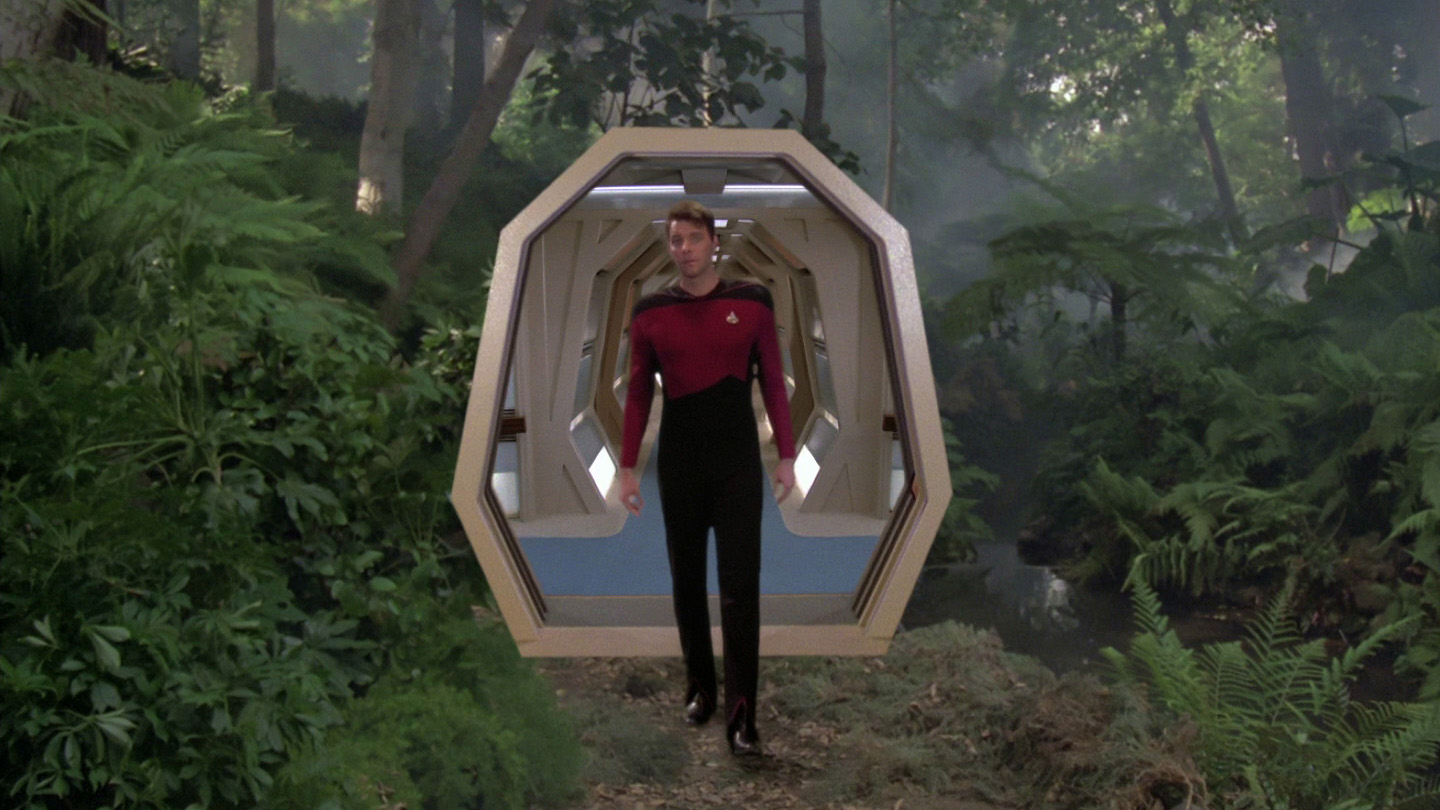
1987 - 1994: Star Trek The Next Generation
There’s plenty of futuristic tech on board the USS Enterprise and plenty of storylines about simulated realities throughout the crew’s adventures. But we can’t talk about the evolution of virtual reality on screen without mentioning the Holodeck.
The Holodeck is a room aboard the Enterprise in which virtual programmes featuring objects, people and sprawling environments are built through the manipulation of ‘holomatter’. It’s a great way to expand plot points, allow characters to travel back throughout history and discuss the dangers if this kind of immersive tech ever goes awry - and you can bet it does on many occasions.
Strictly speaking, the Holodeck first appeared in the 70s in the Star Trek animated series, but it wasn’t until TNG came along that it played such a big role in developing the tech, plot and characters of the Star Trek universe.
Although it’s hard to pigeon hole tech that doesn’t even exist, the Holodeck is arguably more mixed or augmented reality in more ways than virtual reality, but we felt it deserved a place on the list because of the role it played in bringing the idea of building a virtual environment in a physical space into mainstream consciousness.
1988: Red Dwarf - Better Than Life
This is the first Red Dwarf episode that features Better Than Life, an immersive VR game that crops up in the Red Dwarf novels. When the characters are in the game, anything that’s going on in their minds comes true. So they’re able to lead lavish and ridiculously OTT lives, but then people in their lives still behave the ways they expect them to - even in their supposed paradise.
1990: Total Recall
This Arnie-powered, action-packed adventure is loosely based on Philip K. Dick’s story We Can Remember It For You Wholesale, written in 1966. In 1990 it got the big blockbuster treatment complete with lots of guns, crazy characters and, of course, slick one liners from good ol’ Schwarzenegger. It explores a future in which virtual memories are implanted into people and big corporations are running the world - and the rest of the solar system to boot.
It’s more focused on the creation of virtual memories than the virtual world environments of other movies, but its blurring of what’s real, what’s implanted and what’s imagined makes it a solid entry on our whirlwind tour of simulated realities in film.
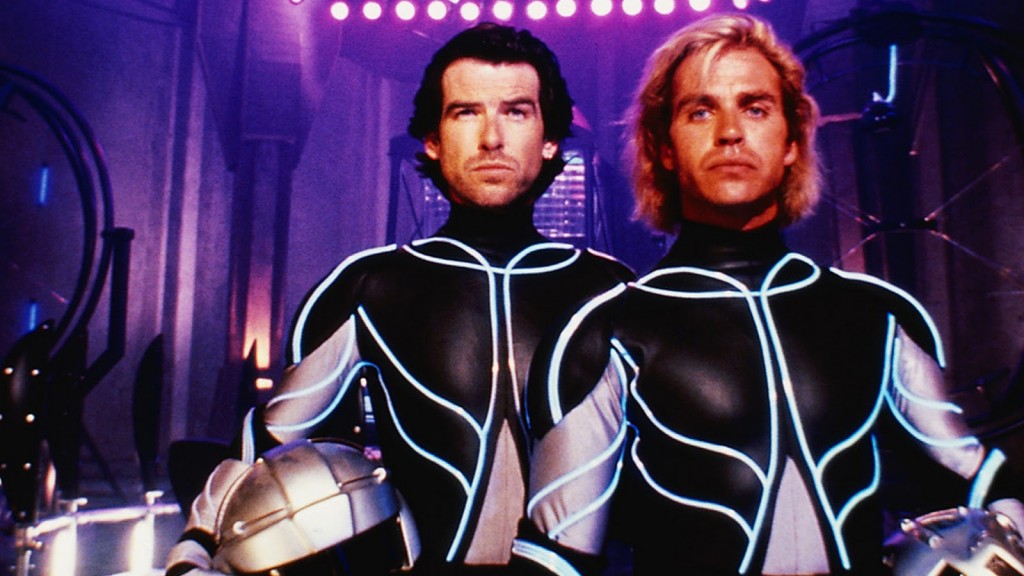
1992: The Lawnmower Man
Many people think The Lawnmower Man is based on a Stephen King book and although it kinda, sort of, is King actually sued when his name was attached to the film because according to him it “bore no meaningful resemblance” to his story.
The movie is about a greenskeeper called Jobe who takes part in an experiment run by Dr. Lawrence Angelo of Virtual Space Industries. He’s essentially given lots of drugs and undergoes a number of virtual reality experiences in an attempt to raise his intelligence. It works. But, as you’d expect from a movie loosely based on a King story, it begins to have a strange effect on Jobe’s psyche too.
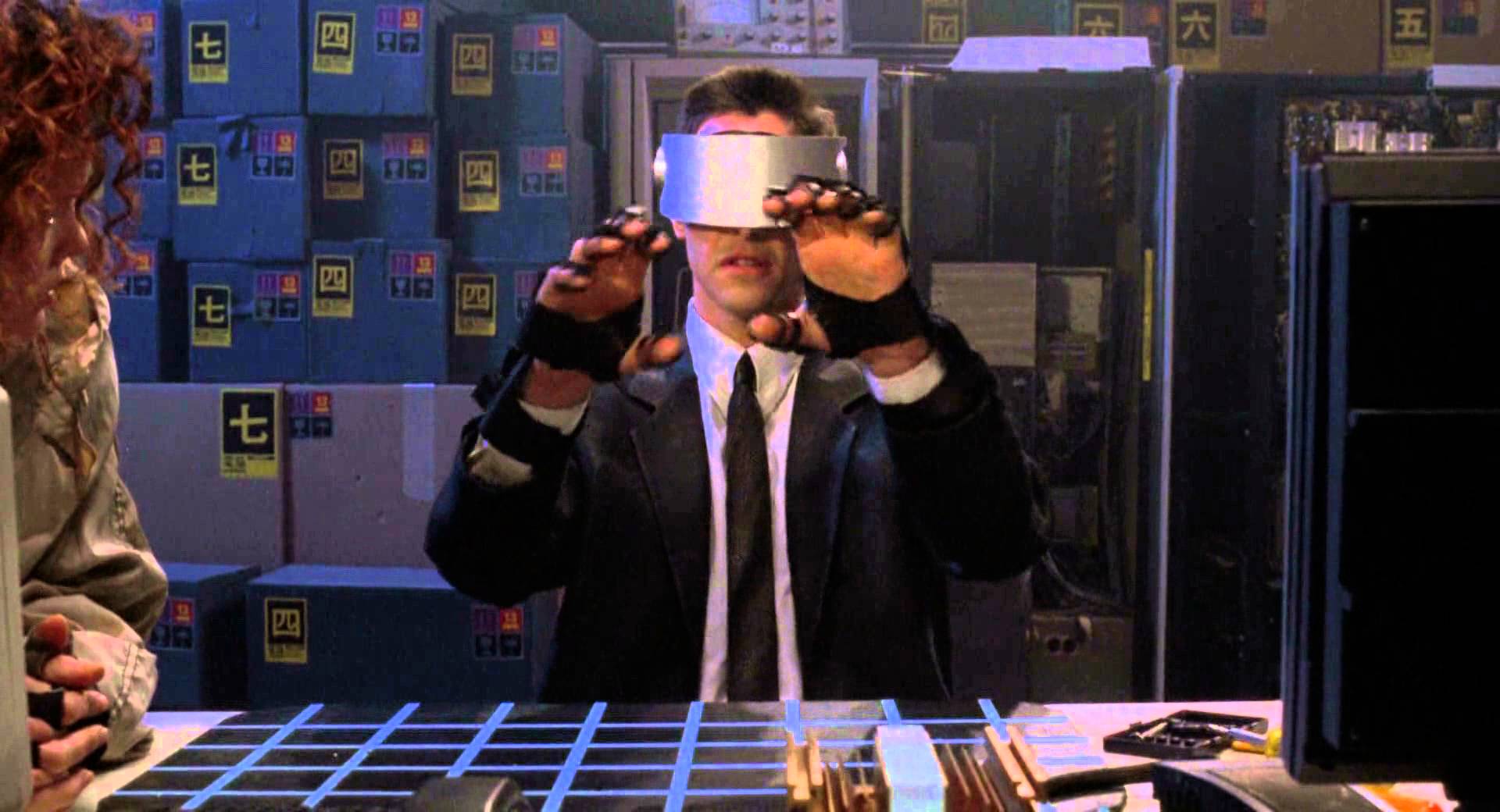
1996: Johnny Mnemonic
Years before Keanu Reeves knocked our socks off with the sci-fi masterpiece that is The Matrix, he’d already earned his VR stripes in cyberpunk thriller Johnny Mnemonic. The film is set in a dystopian future and is all about Neo, we mean John Wick, sorry JOHNNY who has a cybernetic brain implant that stores information. His job is to carry sensitive information around that’s too important to be sent via the Net, a VR equivalent of the internet. Like many other movies in the list, it’s not an original story and is loosely based on a book with the same name by William Gibson.
1995: Strange Days
In the gritty world of Strange Days, some people wear a SQUID, an illegal device that records everything they see, feel and do. Others can then buy these SQUID discs on the black market and experience their memories, physical sensations and everything else. The story follows two LAPD officers as they attempt to untangle a web of crime, with plenty of SQUID discs forming clues and throwing spanners in the works along the way.
1995: Virtuosity
For some reason, the brilliant minds in Virtuosity have created something called a SID, which stands for Sadistic, Intelligent and Dangerous. It’s a VR amalgamation of all the most dangerous serial killers that have ever lived, but it’s trapped in a VR world so that’s all fine, right? Can you guess where this is going next? That’s right! The SID escapes into the real world. It’s a serial killer movie, a crime drama and a shaky tech story, which is saved by having Denzel Washington and Russell Crowe at the helm.
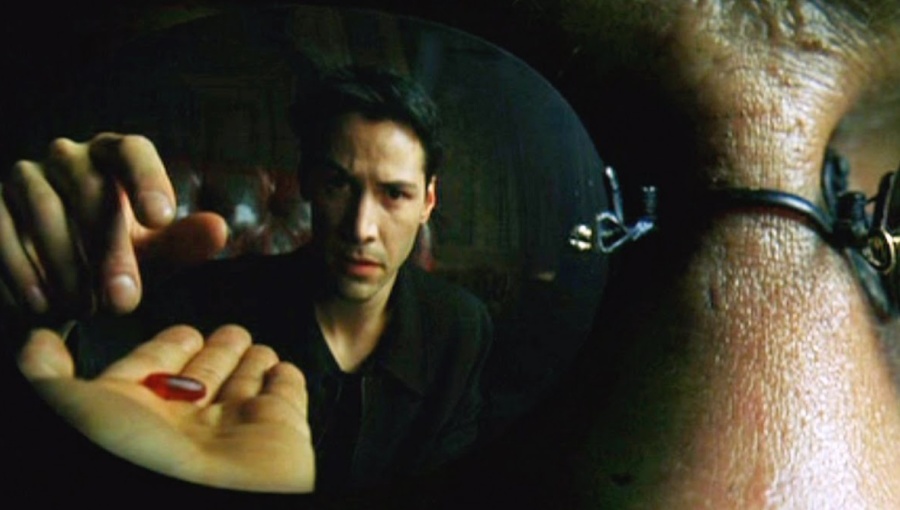
1999: The Matrix
Possibly the most famous and epic virtual reality movie out there, but did The Matrix strike you as a VR movie on first viewing? After all, where’s the fancy headgear and cool games? But that’s because all of humanity is supposedly hooked up to a big, fake virtual reality that makes up The Matrix and the worst part is, no one (well, mostly no one) knows it. But the truth is that the Matrix is everywhere. It is all around us. Even now, in this very room. You can see it when you look out your window or when you turn on your television. You can feel it when you go to work... when you go to church... when you pay your taxes. It is the world that has been pulled over your eyes to blind you from the truth. We’ll stop now.
1999: eXistenZ
We know, we know, just seeing David Cronenberg and immersive virtual reality game in the same sentence is bound to give some of you chills already. And you won’t be disappointed. This cult movie starring Jennifer Jason Leigh and Jude Law is about a virtual reality game to rule all virtual reality games, which you enter by plugging a cord directly into your spine. I mean, what did you expect from the director who brought us Videodrome? And if the thought of a spinal cord VR set-up makes you squeamish already, then don’t venture any further into this baffling, nightmarish body horror flick.
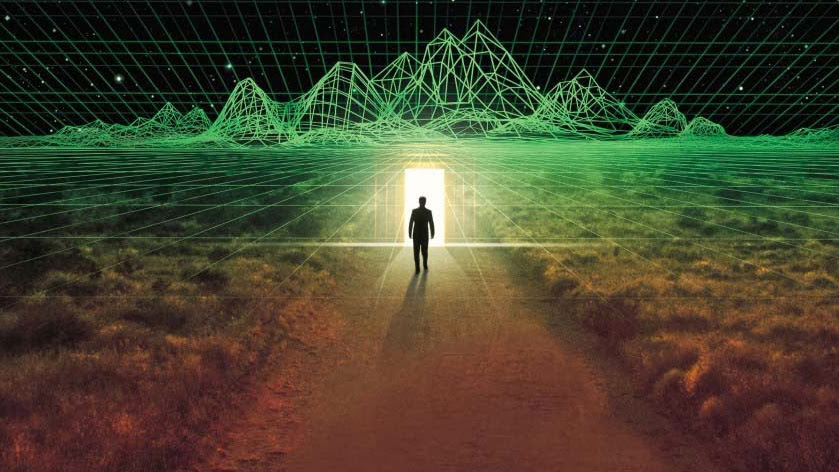
1999: The Thirteenth Floor
It seems that gnawing sense of millennial dread was making us all feel very funny about the future, because here’s another dark, futuristic tech movie from 1999. Just like World On A Wire, our first movie in the list, The Thirteenth Floor is based on Simulacron-3 by Daniel F Galouye. It’s about a real life death that then turns into a murder mystery crossing between the real and the virtual. It’s unfortunate it was released so close to The Matrix, which overshadows it a little with its super show-y, epic sci-fi saga, but that means The Thirteenth Floor has garnered a cult status and is one of our favorite VR movies on the list.
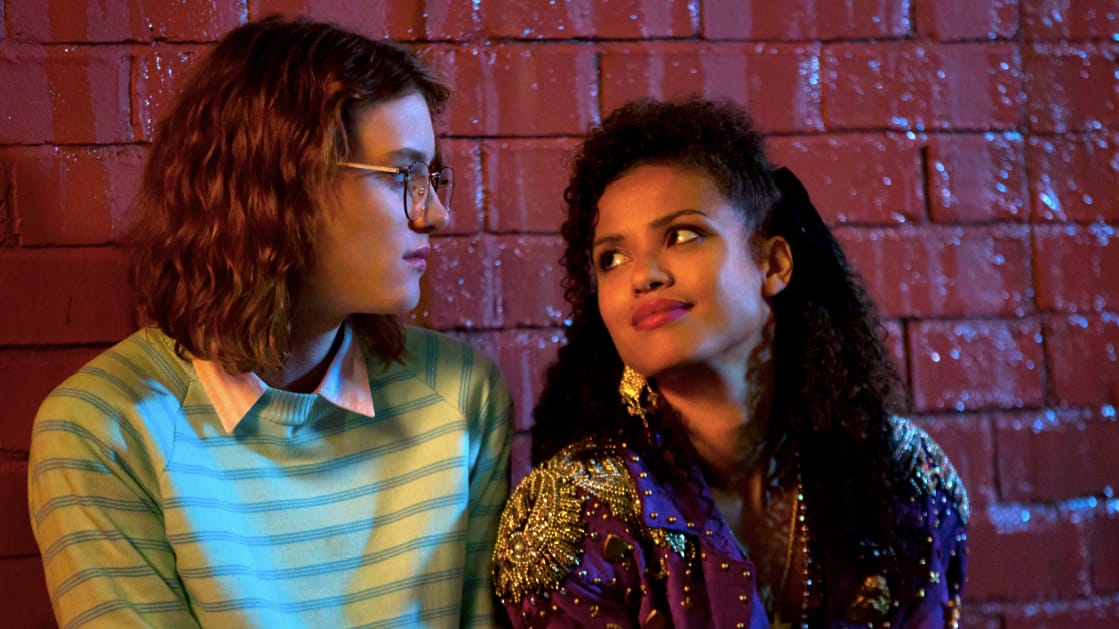
2016: Black Mirror - San Junipero
Although Black Mirror is brilliant, it’s also frustrating and mind-numbingly depressing in how it often paints such a bleak vision of the future, especially our relationship with technology. That’s why the San Junipero episode, although really emotionally draining and guaranteed to make you cry, has been such a hit because it explores the use of a virtual reality in a slightly more positive light. Not only is this refreshing for Black Mirror, it’s refreshing for a timeline of VR movies and TV which is largely dominated by horror, violence and heaps of questionable morals.

2016: Black Mirror - Playtest
And in complete contrast to San Junipero comes Playtest, a deeply disturbing look at a virtual reality game that’s designed to scare and disorientate its players. In fact, we were just watching it sat nice and snuggly at home and even we were left scared and disoriented.
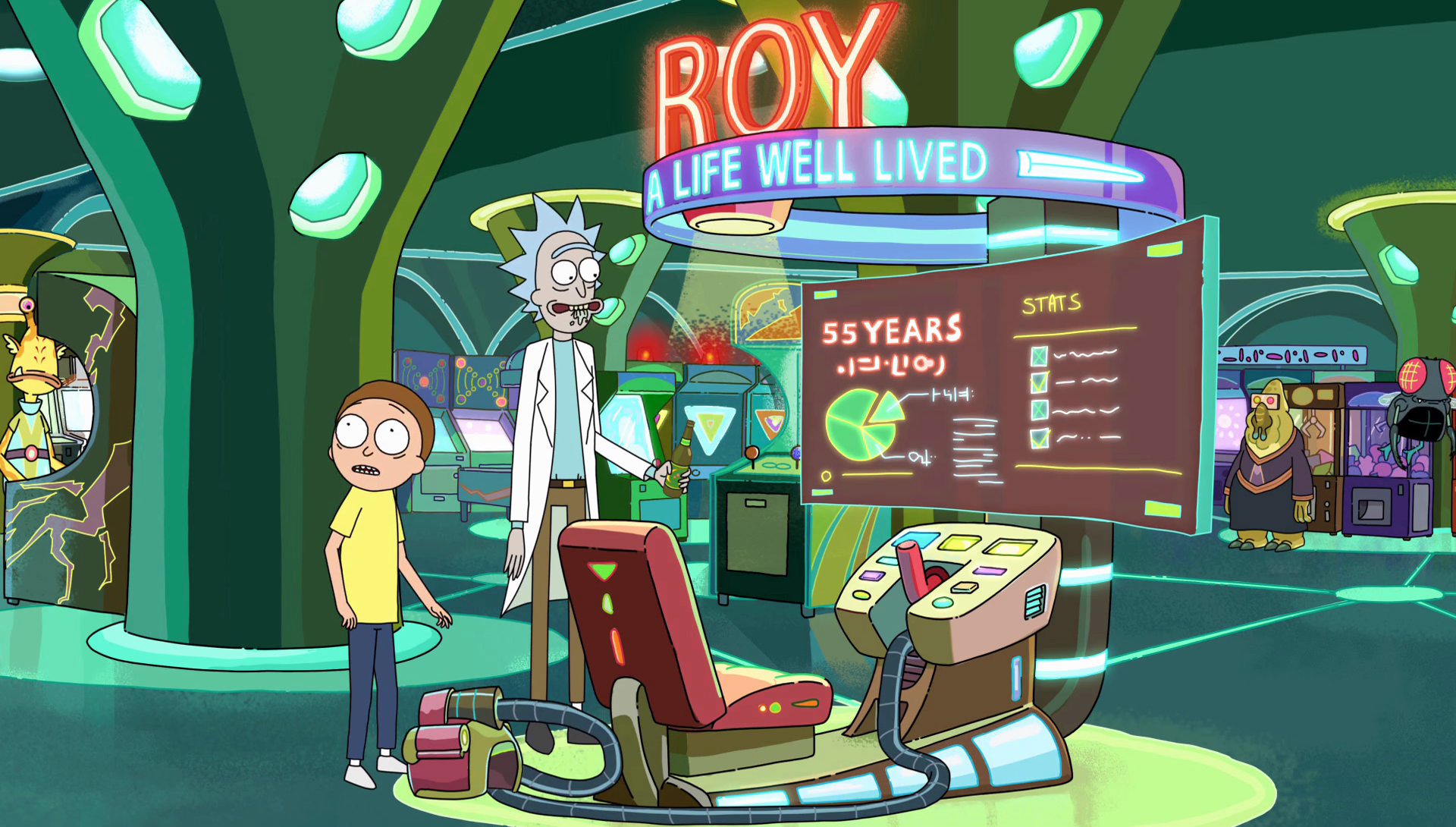
2017: Rick and Morty - Mortynight Run
There’s so much crazy, colorful, mind-boggling tech in the Rick and Morty TV show, but there’s one small yet significant inclusion of virtual reality that leaves a lasting impression.
It’s a VR game called Roy: A Life Well Lived, which Rick and Morty encounter on a trip to a video arcade planet called Blips and Chitz. The game lasts only a few minutes, but during that time players are transported to a virtual world in which they live the full life of a character called Roy. Once Roy dies, they wake up having completed the game. It somehow tows the line between hilarious and harrowing, just like lots of the Rick and Morty plot lines do.
2017: OtherLife
OtherLife is a movie about a form of biological virtual reality, which is an interesting spin on the head mounted displays we’re used to seeing - even in sci-fi movies. It’s about a scientist who creates virtual memories and environments and comes up against the government who want to use her work to ‘imprison’ people in virtual worlds that seem to last years, but only actually last a few minutes. It’s not the best movie on the list, but using virtual reality to not just transport your senses somewhere else but to distort your perception of time is a fascinating avenue to explore.
2018: Ready Player One
In the Ready Player One universe, the world is a rubbish dystopia so people spend lots of their time within the virtual game world of the OASIS. Things get shaken up when the mastermind behind the OASIS dies and leaves a special easter egg within the virtual world for players to find. If they find it, they control the OASIS, so as you can imagine, there’s a huge power struggle for it that takes place in the real world and in the virtual one simultaneously.
Main Image Credit: Jaap Buitendijk/Warner Bros
Get daily insight, inspiration and deals in your inbox
Sign up for breaking news, reviews, opinion, top tech deals, and more.
Becca is a contributor to TechRadar, a freelance journalist and author. She’s been writing about consumer tech and popular science for more than ten years, covering all kinds of topics, including why robots have eyes and whether we’ll experience the overview effect one day. She’s particularly interested in VR/AR, wearables, digital health, space tech and chatting to experts and academics about the future. She’s contributed to TechRadar, T3, Wired, New Scientist, The Guardian, Inverse and many more. Her first book, Screen Time, came out in January 2021 with Bonnier Books. She loves science-fiction, brutalist architecture, and spending too much time floating through space in virtual reality.
